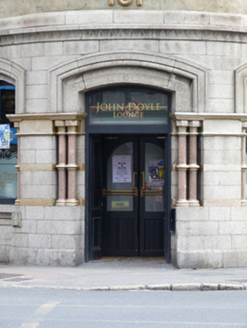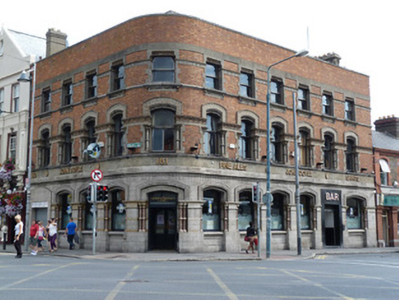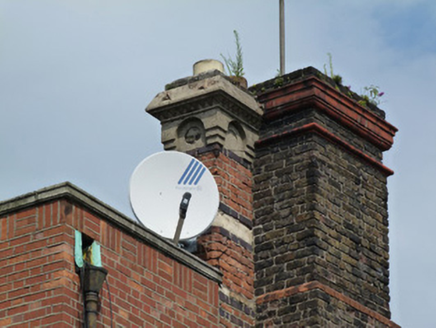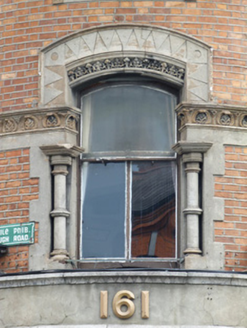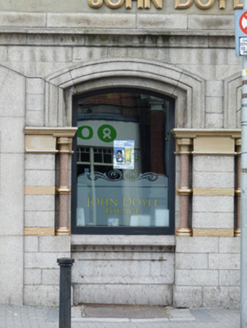Survey Data
Reg No
50060230
Rating
Regional
Categories of Special Interest
Architectural, Artistic, Historical, Social
Previous Name
Thomas Dunphy, grocer, tea, wine and spirit merchant
Original Use
Shop/retail outlet
In Use As
Public house
Date
1870 - 1875
Coordinates
315061, 235890
Date Recorded
27/08/2014
Date Updated
--/--/--
Description
Corner-sited commercial building, built 1873, with six-bay three-storey elevation to front (south), four-bay three-storey elevation to west and curved single-bay three-storey elevation to southwest. Shopfronts to south, southwest and west elevations. Now in use as public house. U-plan hipped roof, brick and cement rendered chimneystacks hidden behind raised brick parapet with concrete coping. Red brick walls laid in Flemish bond with cement-rendered plat-bands. Segmental-headed window openings having stepped cement rendered surrounds with inset stone columns and chevron motif to heads, fascia acting as continuous sill course, carved string course to impost level, and with one-over-one pane timber sliding sash windows to first floor. Shouldered-arch openings with cement rendered surrounds, terracotta lintels and concrete sills and one-over-one pane timber sliding sash windows to second floor, with pierced string course at impost level. Shopfront faced in granite, having granite fascia with raised lettering. Segmental-headed window openings with granite surrounds, framed by marble columns and plate glass windows to ground floor. Segmental-headed door opening with granite surrounds, framed by paired marble columns with timber double-leaf doors. Street fronted.
Appraisal
This building is incorporated successfully into its prominent corner site by the use of a rounded corner connecting the south and west elevations. It is a fine example of a Victorian commercial premises, incorporating grocery and public house, a type which sprung up around the city in the latter part of the nineteenth century. It was once owned by John Doyle and lends its name to Doyle’s Corner, the junction of the Phibsborough and North Circular Roads. The window surrounds and columns illustrate the high-quality craftsmanship applied to this building. It was designed by the Dublin City architect John Sterling Butler and constructed by builder Mr. James Donnelly for Thomas Dunphy 'grocer, tea, wine and spirit merchant' in 1873.
